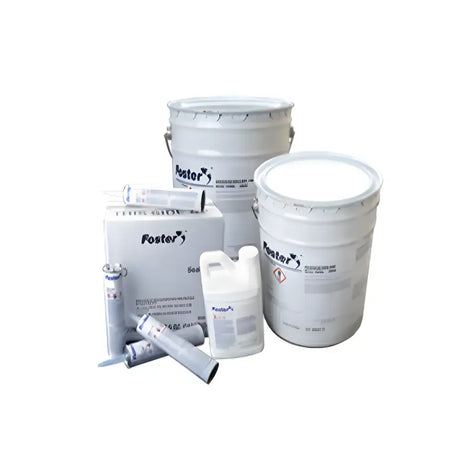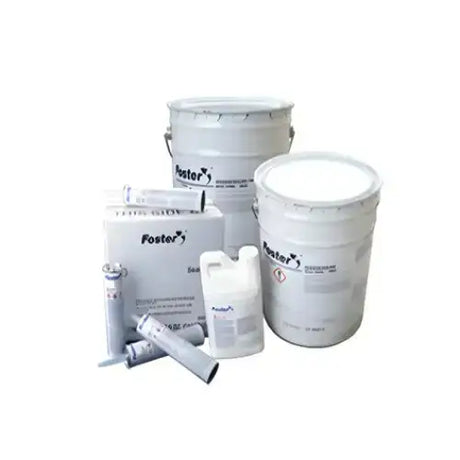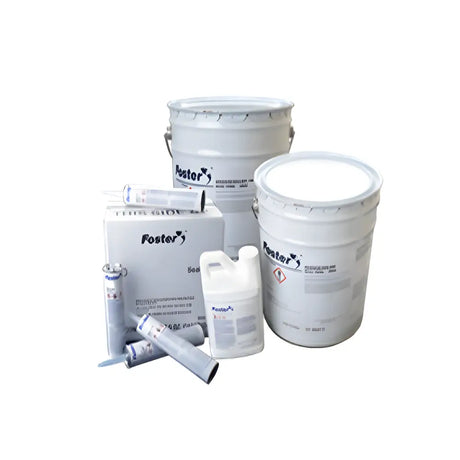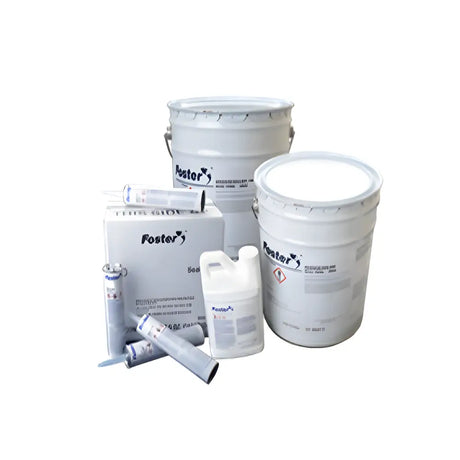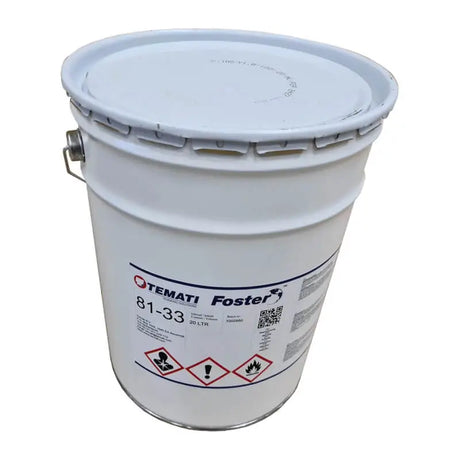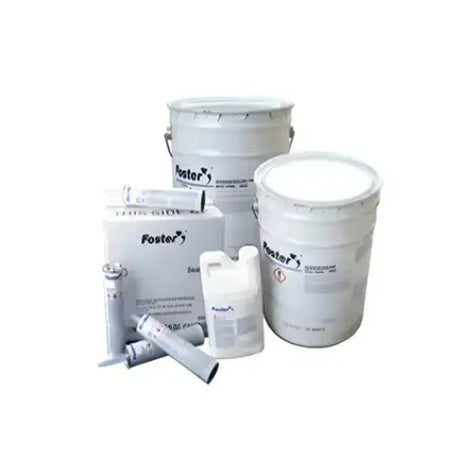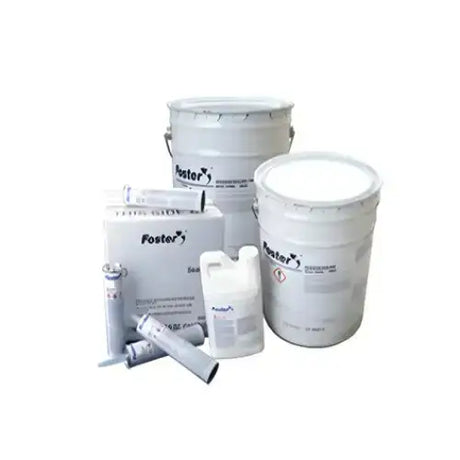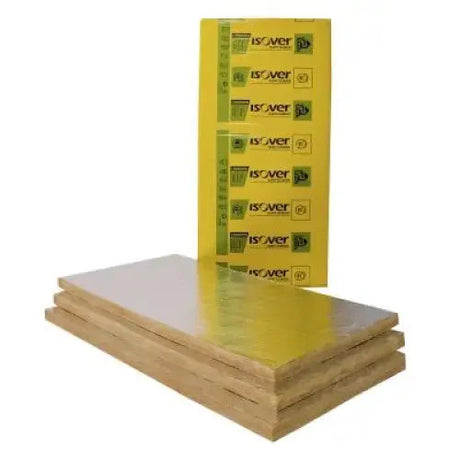When it comes to withstanding the heat, not all materials are created equal. In the world of industrial strength adhesives and sealants, high-temperature mastics are the unsung heroes, keeping machinery ticking and structures secure, even when the thermometer soars. But what are these robust materials, and why are they so important? Let's dive in and turn up the heat on our knowledge of high-temperature mastics.
Understanding High-Temperature Mastics
What are high-temperature mastics?
High-temperature mastics are like the superheroes of sealants—tough, resilient, and capable of facing intense heat without breaking a sweat. They're specially formulated to maintain their sealing and adhesive properties in environments where average materials would throw in the towel.
Importance in industrial applications
Why is this important, you ask? Well, in industrial settings where machinery operates at high temperatures, or where safety and durability are non-negotiable, these mastics are the go-to solution. Their ability to perform under fire (sometimes quite literally) is paramount to the success and longevity of countless operations.
Key characteristics of high-temperature mastics
The key to their performance lies in their impressive characteristics. They resist scorching temperatures that would leave other materials in a puddle of defeat. They laugh in the face of chemicals that would eat away at lesser substances. And they stick with the strength of a steadfast friend, binding materials that must not come apart.
Applications of High-Temperature Mastics
In the aerospace industry
Imagine the blistering conditions faced by spacecraft or high-speed jets. High-temperature mastics play a critical role here, ensuring that every component is sealed and secured against the extreme conditions of both atmospheric re-entry and supersonic travel. It's not just about withstanding heat; it's about ensuring the safety and success of missions that push the boundaries of human endeavour.
Furnace linings and refractory repairs
Down on terra firma, the story is just as hot. Furnaces that reach sky-high temperatures rely on these mastics to keep their linings intact. And when it comes to refractory repairs, these sealants are the first line of defence, ensuring that heat-intensive processes don't grind to a halt due to material failure.
Sealing and insulation
And let’s not forget about the role these mastics play in sealing and insulation. In industries where control over temperature is synonymous with quality and safety, high-temperature mastics are the unsung champions, ensuring that heat stays where it's supposed to, and nowhere else.
Types of High-Temperature Mastics
Silicone-based
First up, the versatile silicone-based mastics. These are the go-to for a wide range of applications, offering excellent heat resistance and flexibility. They're like the gymnasts of the mastic world, bending without breaking under thermal stress.
Ceramic-based
Then we have the ceramic-based mastics. These are the heavyweights, offering top-notch heat resistance and structural integrity. When the heat is on, and I mean really on, these are the mastics that stand their ground.
Graphite-based
Lastly, we've got graphite-based mastics, which are all about conductivity. They're the conductors of the orchestra, ensuring that heat is distributed evenly, making them a favourite in applications where heat management is critical.
Properties and Features
High-temperature resistance
At the core of high-temperature mastics is their ability to withstand the kind of temperatures that would make a sauna seem like a refrigerator. We’re talking about heat that can melt metals, warp materials, and alter the very structure of substances.
Chemical resistance
Then there's their ability to resist chemicals. Acids, alkalis, solvents—you name it, high-temperature mastics can take it. This makes them essential in environments where chemical exposure is a daily reality.
Thermal conductivity
Their thermal conductivity is another feather in their cap. Some mastics are designed to spread the heat, while others aim to contain it. Whatever the goal, there's a mastic that's up to the task.
Adhesion and bonding strength
But what good is resistance without strength? High-temperature mastics are not only about surviving the heat; they're about maintaining a bond that can hold up under pressure. This adhesion and bonding strength are what make them so dependable when the heat is on.
Factors to Consider When Choosing High-Temperature Mastics
Operating temperature range
When shopping for a high-temperature mastic, the first question to ask is, "Just how hot is it going to get?" The operating temperature range is crucial because you need a mastic that won't just survive but thrive at the temperatures it will face.
Compatibility with substrates
Next up, consider compatibility. It's like matchmaking for materials; you want to ensure that your mastic and the substrates it's bonding are a match made in heaven. A strong, lasting bond depends on this compatibility.
Environmental considerations
Let's not forget about Mother Nature. Environmental considerations are key, especially in an age where sustainability is not just a buzzword, but a business imperative. Eco-friendly mastics are not only better for the planet, but they can also be better for your bottom line.
Longevity and durability
And of course, there's longevity and durability. It's not just about weathering the storm; it's about coming out the other side unscathed. You want a mastic that's going to last, providing a seal or bond that you won't have to worry about for a good long while.
Installation and Application Techniques
Surface preparation
Before you even pop the cap on that mastic, surface preparation is key. A clean, dry, and stable surface is your canvas, and it must be prepped properly for the masterpiece that is a perfect mastic application.
Proper mixing and handling
Once you're ready to apply, the mastic itself must be treated with care. Proper mixing and handling are like the mise en place in a gourmet kitchen—everything needs to be ready and right before the main event.
Application methods
And speaking of application, there's more than one way to lay down a line of mastic. Whether it's with a trowel, sprayer, or caulking gun, the method must match the material. It's like choosing the right paintbrush for a delicate watercolour or a bold oil painting.
Maintenance and Repair
Inspection and maintenance
Even the sturdiest high-temperature mastic will need a check-up now and then. Regular inspection and maintenance are like taking your car in for a service—it's about catching issues before they become problems.
Repair techniques
And if there's damage, fear not. Repair techniques for damaged high-temperature mastic are your emergency repair kit, ensuring that you can patch things up and keep the show on the road.
Reapplication and refurbishment
Sometimes, a touch-up isn't enough, and that's where reapplication and refurbishment come into play. It's about restoring the integrity of your seal or bond, making sure it's as good as new.
Safety Considerations
Health and safety guidelines
Let's talk safety. Working with high-temperature mastics isn't a walk in the park. Health and safety guidelines are there for a reason—because keeping you safe is just as important as keeping your materials secure.
Personal protective equipment (PPE)
This means suiting up in the right personal protective equipment (PPE). Gloves, goggles, masks—this is the gear that will keep you from harm's way when working with these potent compounds.
Proper ventilation and containment
And let's not forget about the air we breathe. Proper ventilation and containment measures are crucial. Working with high-temperature mastics should be a breath of fresh air, not a toxic hazard.
Regulatory Compliance
International standards for high-temperature mastics
Navigating the maze of regulatory compliance can be daunting, but it's essential. International standards ensure that high-temperature mastics are up to snuff, meeting global benchmarks for safety and performance. It's like having a passport that guarantees your mastic is welcome and respected the world over.
Environmental regulations and restrictions
In an era where the environment is front and centre, regulations and restrictions play a pivotal role. These rules ensure that the mastics we use are not only effective but also kind to the planet. Think of it as a green thumbs-up for your industrial processes.
Compliance with industry-specific requirements
Every industry has its own set of rules, and compliance is key. Whether you're in aerospace or automotive, energy or electronics, making sure your high-temperature mastic meets industry-specific requirements is like ticking all the right boxes on a critical checklist.
Advantages of High-Temperature Mastics
Enhanced thermal insulation
One of the standout advantages of high-temperature mastics is their ability to enhance thermal insulation. This is like wrapping your equipment in a thermal blanket, keeping the heat exactly where it should be and improving overall efficiency.
Increased equipment lifespan
Another plus is the way these mastics can increase equipment lifespan. By protecting components from extreme temperatures and harsh conditions, they're like a fountain of youth, helping machinery run smoothly for longer.
Resistance to corrosion and erosion
Then there's their resistance to corrosion and erosion. High-temperature mastics act as a shield, protecting surfaces from the ravages of time and the elements. It's like having an invisible barrier that keeps the bad stuff out.
Versatility in high-temperature applications
Lastly, let's talk about versatility. High-temperature mastics can be tailored to suit a wide range of applications, making them the Swiss Army knife of the sealant world. Whatever the challenge, there's a mastic that’s up for it.
Limitations and Challenges
Temperature limitations
Despite their robustness, high-temperature mastics do have their limits. Temperature limitations vary among different types, so it's important to choose the right one for the job. It's like selecting the appropriate gear for a mountaineering expedition—you need to be prepared for the conditions.
Compatibility issues
Compatibility issues can also pose a challenge. Not all mastics play well with every substrate, so finding the perfect pair is crucial. It's a bit like dating—you have to find the right match to avoid a messy breakup.
Potential performance degradation over time
Even the best high-temperature mastics can suffer performance degradation over time. Regular checks and maintenance are the keys to longevity, much like caring for a cherished classic car.
Cost Analysis
Initial investment in high-temperature mastics
The initial investment in high-temperature mastics might seem steep, but it's important to look at the big picture. This upfront cost is like paying for a premium insurance policy, offering protection when you need it most.
Long-term cost savings
Over the long term, the use of high-temperature mastics can lead to significant cost savings. By improving efficiency and reducing the need for repairs, they're a wise investment that pays dividends down the line. Think of them as the financial advisor who helps you save for a comfortable retirement.
Return on investment (ROI) considerations
When considering the ROI, it's clear that high-temperature mastics are a smart choice. They're like planting a tree that will provide shade for years to come—initial effort for long-term gain.
Case Studies and Success Stories
Real-world examples of applications
Real-world case studies shine a light on the success of high-temperature mastics across various industries. From the heat of a blast furnace to the chill of a space shuttle, these materials have proven their worth time and again.
Successful outcomes for different industries
The success stories are varied, with industries reaping the benefits of improved safety, efficiency, and longevity. It's like reading a series of rags-to-riches tales, with high-temperature mastics playing the role of the fairy godmother.
Lessons learned and best practices
Every case study offers lessons learned and best practices. This collective wisdom is a treasure trove for those looking to improve their use of high-temperature mastics. It's like having a roadmap that guides you to the destination of optimal performance.
Conclusion
In wrapping up, the significance of high-temperature mastics cannot be overstated. They are crucial in maintaining the integrity and performance of high-temperature equipment and infrastructure. Like the cornerstone of a building, they provide the foundation for safety and success in countless industrial applications.
As we've seen, their ability to withstand intense heat, resist chemicals, and bond with strength makes them indispensable. And like any good partnership, choosing the right mastic for your specific needs will ensure a long and fruitful relationship.
So, whether you're already familiar with these robust materials or just starting to explore their potential, there's no denying the pivotal role they play. It's time for industries to turn up the heat on their use of high-temperature mastics, embracing the protection and performance these remarkable materials offer.


